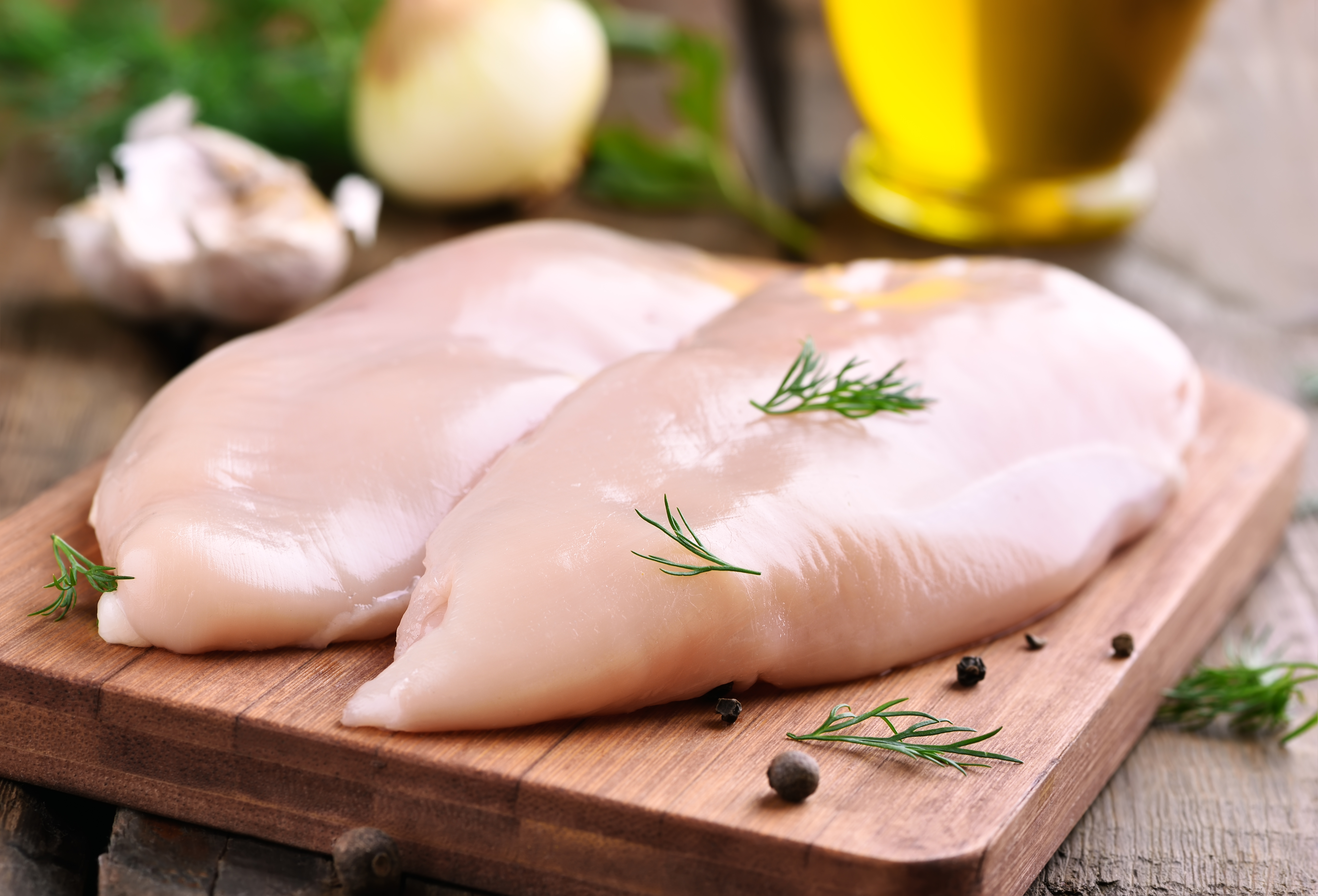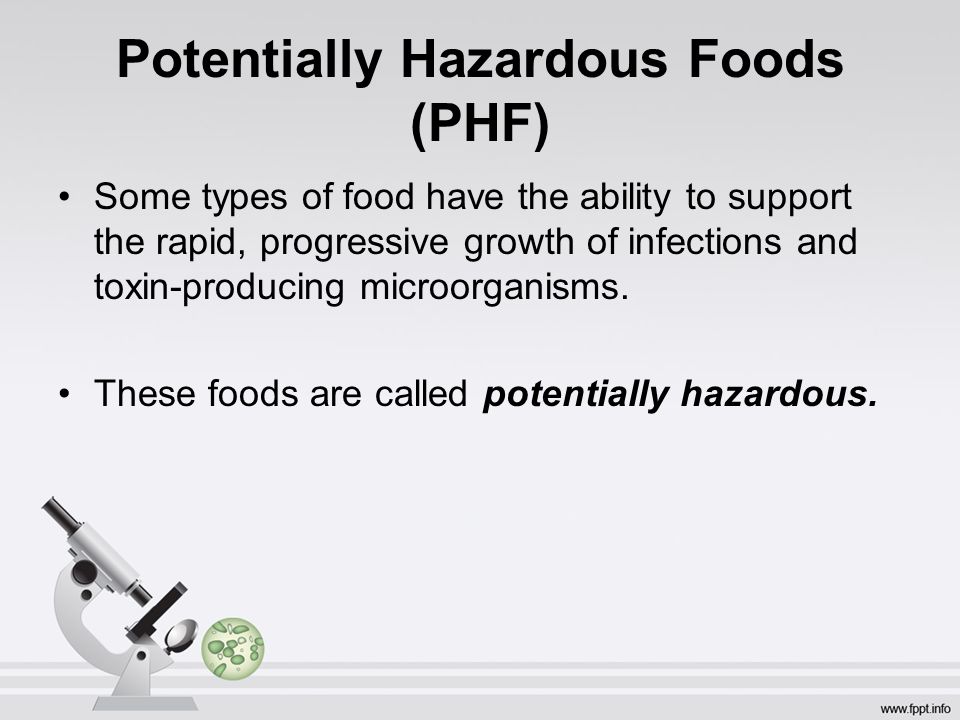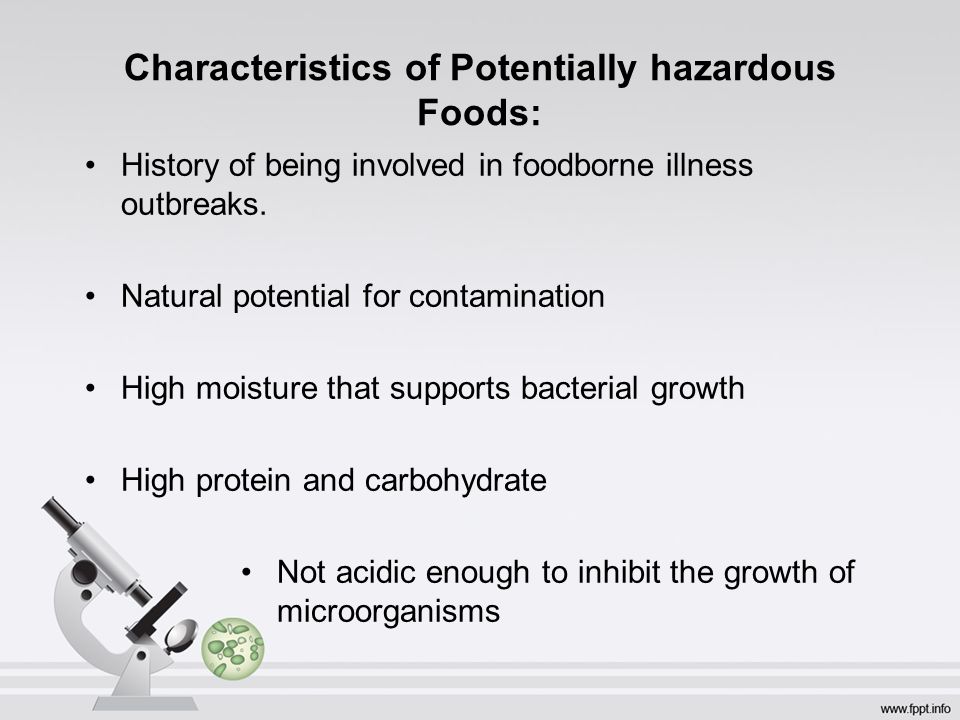potentially hazardous foods should always be
Cooked or Raw Animal Products. A food thermometer is also required if potentially hazardous foods will be served.

List Of Potentially Hazardous Foods
Holding hot potentially hazardous foods at 120 B.

. Is slightly acidic to neutral pH. Potentially hazardous food must be stored at 5C or colder to prevent bacteria from multiplying. Always wash your hands after dealing with these items in general and be sure to cook to the final temperature required for that.
Cooked rice beans and vegetables. For any workstation within a kitchen the following articles should always be found. View E4BAB871-CB2E-461A-90BF-26911E30A583jpeg from ACCT 49 at Loyola University Chicago.
Be not potentially hazardous but still a food safety hazard. Typically Potentially Hazardous Foods contain the following. All of the above.
Is neutral to slightly acidic - typically having a pH between 46 and 75. Potentially hazardous foods In Standard 322 potentially hazardous food is defined as food that has to be kept at certain temperatures to minimise the growth of any pathogenic microorganisms that may be present in the food or to prevent the formation of toxins in the food. The following are considered PHFs.
Michigan State University Extension recommends that you handle potentially hazardous foods safely in your home kitchen. These foods should always be kept either below 5C or. Safe Food Australia is a guide to the food safety standards in Chapter 3 of the Food Standards Code.
Seafood can have different types of toxins that occur naturally in fish which can be hard to identify. A PHF is a food that. The FDA now refers to Potentially Hazardous foods as TimeTemperature Control for Safety TCS.
Temperatures between 5C and 60C allow bacteria to multiply quickly. Contains moisture - usually regarded as a water activity greater than 085. For example opening a can of beef stew slicing a melon cooking.
Potentially hazardous foods should be kept at 5 C or colder or above 60 C wherever possible however ready-to-eat foods can safely remain between 5 C and 60 C for up to 4 hours. But as always producers should confirm on their own before selling and they can reach out to the local county extension or the USDA for advice. 1 hour B.
All of the above. Potentially hazardous Foods PHFs are foods that require time and temperature control in order to prevent bacteria growth. Raw meat including.
List of Time-Temperature Control for Safety TCS Foods previously known as Potentially Hazardous Foods Meats Bacon in raw form Beef ground roasts steak Gravy Ground meats - all Hot Dogs Lunch meat Meat casseroles Pork ground ham roasts Processed meats - all Sausage Soups Stews Poultry Chicken ground roasted. Allowing guests to re-use cups for beverage refills D. The fish should have clear unsunken eyes and.
Allowing guests to use the same plate for a return trip to the self-service bar. Safe Cold Storage Here are some basic food safety principles for the cold store. Specific requirements are covered under Standard 322 clauses 5 6 8 and 10.
The above foods might become potentially hazardous when the food is opened or altered in some way. Keep hot food hot - 60ºC or above. Storing raw meat next to ready-to-eat food C.
O Using the restroom o. Beef pork lamb and poultry. The list below based on the FDA Food Code is a good starting point.
Always keep potentially hazardous food under temperature control. Sprouts and sprout seeds. The following activities should always be followed by thorough hand washing.
A food thermometer is also required if potentially hazardous foods will be served. All potentially hazardous food should be kept below 41 o F for cold foods or above 135 o F for hot foods except during necessary preparation time or a short display period. If you are infected with Salmonella enteritidis symptoms can occur within 12 to 72 hours and they include fever abdominal cramps and diarrhea.
Copies of the guide are available at on our website or by emailing informationfoodstandardsgovau. Foods are accordingly assessed to be of high medium or low risk based on the potential to contain. Potentially hazardous foods are also referred to.
Raw eggs may contain Salmonella enteritidis and even when eggs are lightly cooked you are at risk of infection. Dairy products including custard pies. Always purchase seafood from a reputable seller.
Potentially hazardous food is a defined concept identifying foods to be maintained at certain temperatures to minimize the growth of any pathogenic microorganisms that may be present in the food or to prevent the formation of toxins in the food ANZFSC Standard 322 cl. Hot or cold holding equipment may be required to store and display food during an event. Store potentially hazardous foods cold at or below 41 degrees Fahrenheit or hot at or above 140 degrees Fahrenheit to prevent the growth of disease.
This is because it takes more than 4 hours for food poisoning bacteria to grow to dangerous levels. All foods need to be stored in clean and covered food grade. Potentially Hazardous Food is a term used by food safety organizations to classify foods that require time-temperature control to keep them safe for human consumption.
Potentially hazardous foods need to be stored below 5C when in cold storage. Potentially Hazardous Foods PHFs. Avoid eating raw cookie or cake dough if they contain eggs.
Meat fish and poultry. Keep cold food cold - 5ºC or below. Red bucket filled with diluted bleach water C.
The meats should always be handled with care cleaned up after and cutting boards changed. 3 Raw potentially hazardous food should always be stored below ready-to-eat food in a refrigerator. For example foodborne illness has resulted from the consumption of peanut butter and unpasteurised juices.
Plastic hand gloves B. Potentially hazardous food is explained in Appendix 1 and 2. Tofu or other soy proteins.
Foods are accordingly assessed to be of high medium or low risk based on the potential to contain. All potentially hazardous food should be kept below 41 o F for cold foods or above 135 o F for hot foods except during necessary preparation time or a short display period. Hot or cold holding equipment may be required to store and display food during an event.
Cut melons cut tomatoes and cut leafy greens. Potentially Hazardous Foods A Report of the Institute of Food Technologists for the Food and Drug Administration of the United States Department of Health and. Potentially hazardous food is a defined concept identifying foods to be maintained at certain temperatures to minimize the growth of any pathogenic microorganisms that may be present in the food or to prevent the formation of toxins in the food ANZFSC Standard 322 cl.
Potentially hazardous foods must be cooled from 140F to 70F in two hours and from 70F to 40F in how many hours.

Tips For Food Safety In An Emergency Time Safety Course In Saudi Arabia Food Safety Food Safety Tips Safety Tips

5 Safety Tips Every Employee Should Know Workplace Safety Safety Training Workplace Injury

What Is Time Temperature Control For Safety Tcs

Potentially Hazardous Foods Health And Wellbeing Queensland Government

Potentially Hazardous Foods Health And Wellbeing Queensland Government

An Overview Of Potential Hazards In Food Service Operations Ppt Video Online Download

Http Www Woodfruitticher Com Pdfs Preparing Food Pdf Preparation Food Preparation Prevention

Pretty Soon Kids Will Be Buzzing With Excitement At The Thought Of Unwrapping New Toys For Christmas Toys Can Be Gifts For Kids Emergency Room Christmas Toys

An Overview Of Potential Hazards In Food Service Operations Ppt Video Online Download

An Overview Of Potential Hazards In Food Service Operations Ppt Video Online Download

List Of Potentially Hazardous Foods

List Of Potentially Hazardous Foods

An Overview Of Potential Hazards In Food Service Operations Ppt Video Online Download
List Of Potentially Hazardous Foods

What Are The Electrical Hazards On Work Place Health And Safety Poster Health And Safety Electrical Safety
Preventing Foodborne Illness Food Safety Sanitation And Personal Hygiene

Some Festive Season Fire Safety Tips Form Your Number 1 Partner In Ohs Lets All Keep Safe This Festive Season Th Fire Safety Tips Safety Topics Safety Tips
